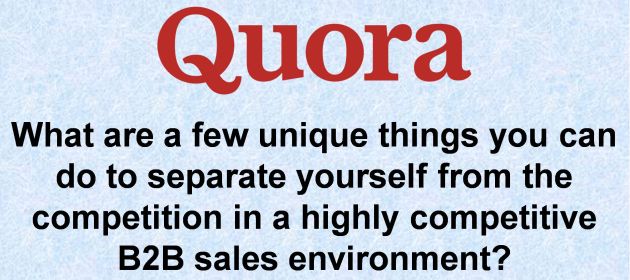There are many business relationships where trust is one-sided.
Let me give a few examples of such relationships in which the contract between two parties A and B is such that A needs to trust B but B does not need not trust A.
#1. METERING
Mobile phone subscriber consumes data. The consumption is measured by the Mobile Network Operator (MNO). If the consumption exceeds the quota included in the subscriber’s plan, the MNO raises a bill for the excess data (“overage”). Bills raised by an MNO are based unilaterally on measurements made by its own metering systems. Although there are consumer-side apps to track data usage (e.g. Onavo), no MNO I know will accept the figure reported by them in the event of a dispute between the readings of the consumer’s and MNO’s metering apps. So, consumer needs to trust that the MNO measures the bandwidth correctly and that it does not pad the consumption in order to make a few extra bucks.
#2. FEES
Student pays tuition to college. College does not issue any receipt and says “it’s in the system”. While the student can download the receipt from the system, his or her access to the system is controlled unilaterally by the college, which is the owner of the system. So, the student needs to trust the college not to revoke their access rights to the system.
#3. PAYMENTS
Suppliers need to trust that their customers would make their payments as soon as they fulfill the terms of the contract signed by the two of them.
You can find a few more examples in Will You, Won’t You, Will You, Won’t You Get Your Blockchain App?.
In all these cases, trust is asymmetric.
Mobile phone subscriber needs to trust the MNO but MNO does not need to trust the mobile phone subscriber. Student needs to trust the college but college does not need to trust the student. And so on.
Asymmetric trust relationships have been around for a long time. Given that the sky hasn’t fallen during this period, they seem to be working quite well.
However, that’s not to say there’s no scope for improvement. Especially when it comes to #3 – ensuring that suppliers get paid on time.
Good news is, blockchain offers a way to inject mutual trust into business relationships. In the context of the above examples, this is how blockchain can do that:
- MNO and Subscriber agree on a third-party metering dApp hosted on the blockchain. Subscriber has full visibility into their data consumption and is thus assured that MNO can’t pad its bills.
- College publishes the fee receipt on the blockchain. With their unfettered access to the blockchain, a student can download the receipt anytime without going through the college.
- The contract signed by the Supplier and Customer should be converted into a Smart Contract and published on a blockchain. As soon as the supplier’s fullfillment of all contract terms is reported to the blockchain, the Smart Contract should automatically transfer the due amount from the Customer’s bank account to the Supplier’s bank account. That would be similar to the way in which a blockchain flight delay insurance product pays out the insured amount automatically when a flight is delayed – without the need for the policyholder to file a claim or do anything else. That way, the Supplier is assured of getting their payments on time.
At the technology level, Blockchain appears to be a panacea for all the evils of trust deficit inherent in asymmetric trust models.
However, the rubber meets the road only when it comes to development and adoption of the said technology.
The College in Example #2 might claim that it does not have the tech chops required to onboard the blockchain. (Going by how screwed up their plain vanilla websites are, I wouldn’t disagree!)
The Customer in #3 wouldn’t be eager to sign a Smart Contract that would deprive him of his power to hold back invoices on a whim.
(I’m optimistically assuming that, instead of stonewalling the move, the MNO in the first example would embrace Blockchain as a way of differentiating itself from its competition.)
Enter regulation.
Chicago Mafia Don Al Capone once quipped “you can achieve a lot more with a smile and a gun than with a smile alone”.
Likewise, you can achieve a lot more with Blockchain and Regulation than with Blockchain alone.
Let me take an example from payments.
High street banks in Britain used to enjoy float by taking 4-5 days to clear cheques.
There was no chance that they’d voluntarily forfeit the extra bucks by executing the payment in real time. So the UK government had to intervene and mandate banks to implement Faster Payments, so that the money goes from payer to beneficiary in near real time.
Likewise, regulation can compel MNOs and others to move their systems to the blockchain in order to drive symmetric trust between the two parties in a business relationship.
I’m against regulatory overreach in general. But, without regulation, I’m quite sure that businesses would only implement one-sided blockchain solutions that are favorable to themselves, like the automated property title transfer use case I’d described in Will You, Won’t You, Will You, Won’t You Get Your Blockchain App?.
Blockchain was supposed to eliminate the need for trust and to disintermediate middlemen like regulators.
But it’s clear from the above use cases that
- Blockchain can foster trust, and
- Regulating it can actually bolster its adoption.
This trustlessness claim of Blockchain enthusiasts reminds me of how ERP enthusiasts once used to claim that, by bringing rigor into accounting, ERP will eliminate auditors. Ironically, audit firms built some of the biggest ERP practices in the world since then!
— Ketharaman Swaminathan (@s_ketharaman) June 18, 2018
For regulation to trigger Blockchain killer apps is ironical.
But no more ironical than the fond hope of Bitcoiners that cryptocurrencies will receive a boost from Wall Street satraps whom they threatened to disrupt with their decentralized finance (DeFi) ethos. Yes, I’m looking at ICE Bakkt.
Looks like ICE/Bakkt will strip Bitcoin of its unique features and make it like any other asset in its bid to bring Bitcoin into the mainstream market. Thing is, it might succeed where others have failed.https://t.co/uWN3LwpcJc via @FortuneMagazine pic.twitter.com/nJLxnSS0vO
— Ketharaman Swaminathan (@s_ketharaman) September 25, 2018

